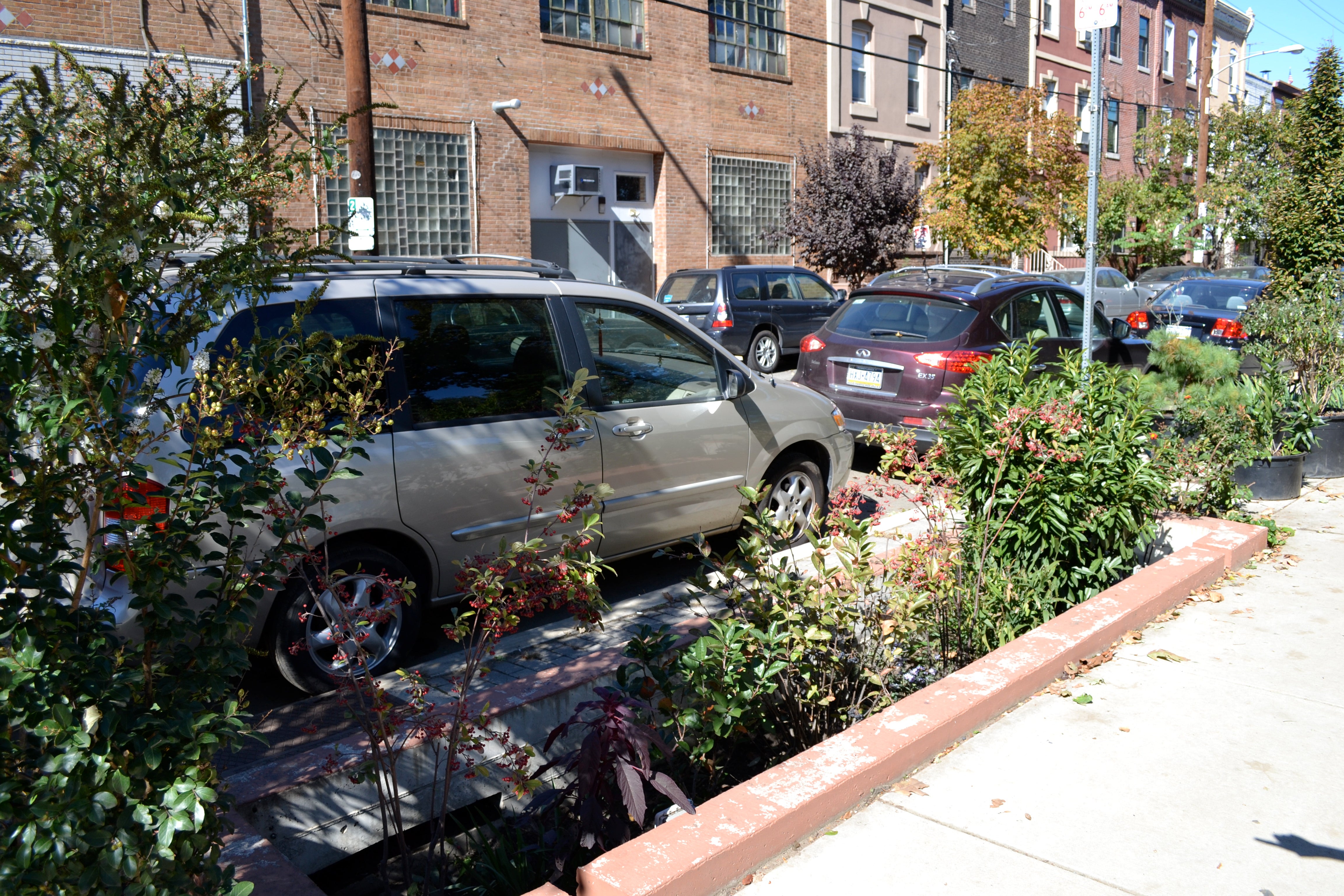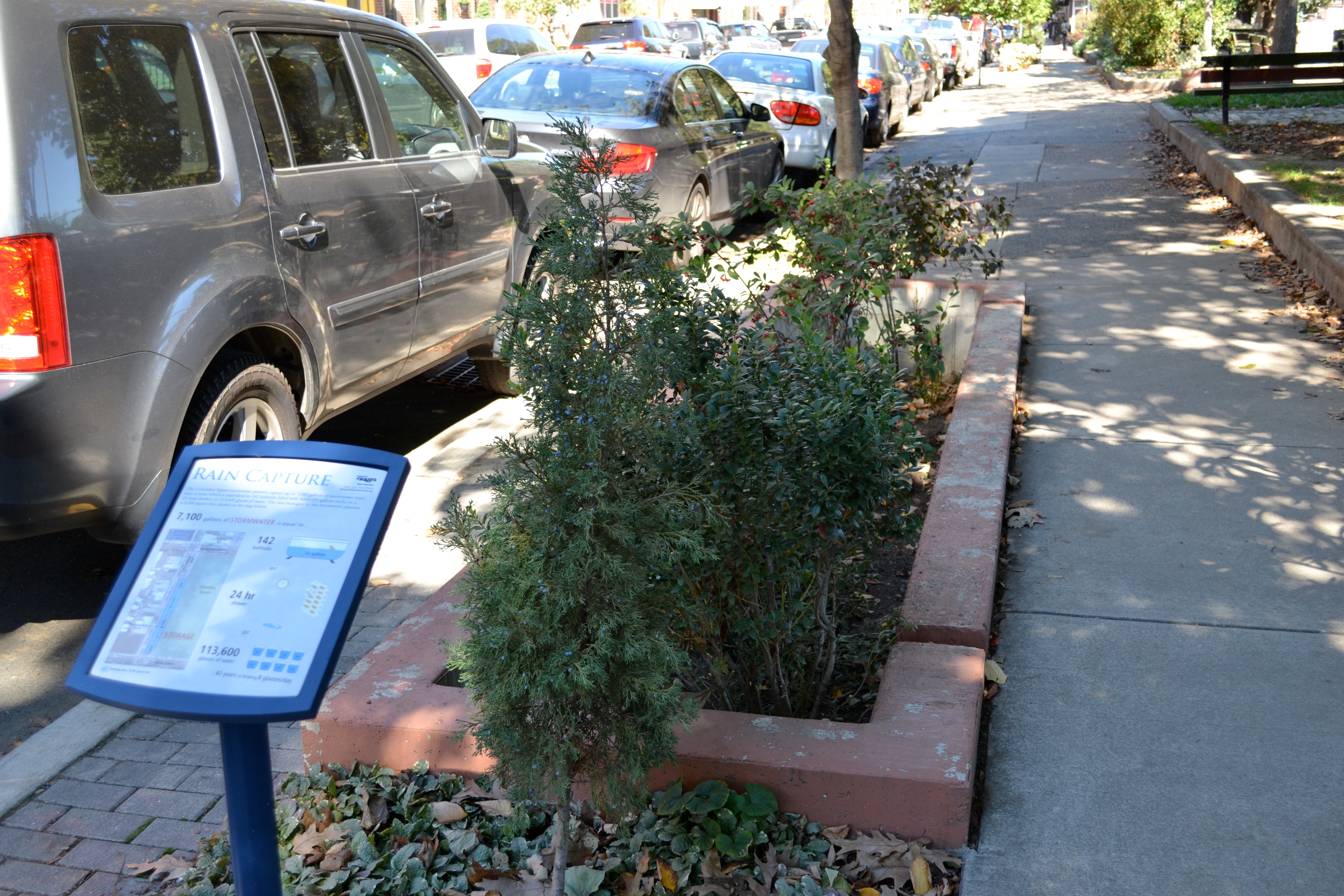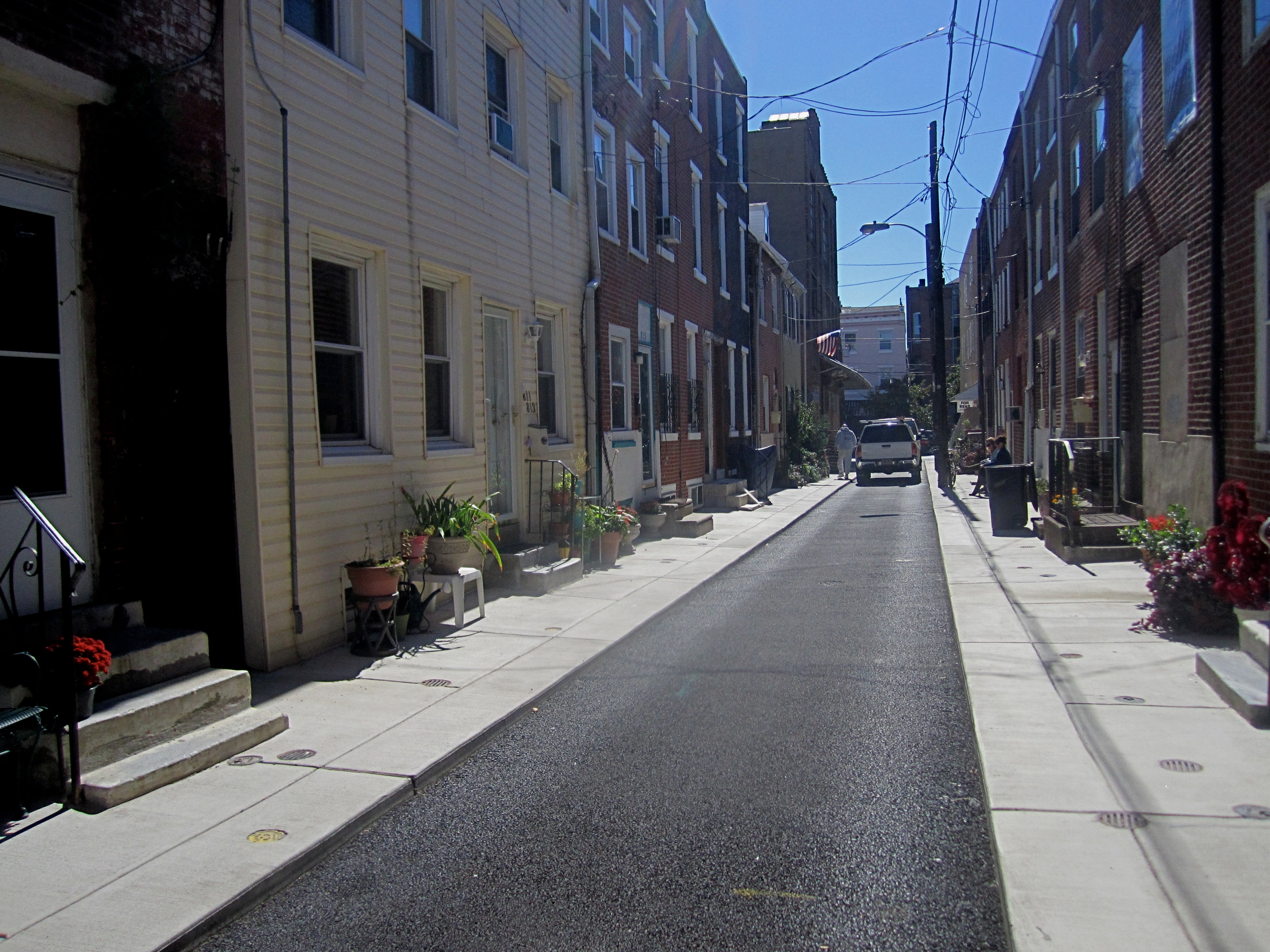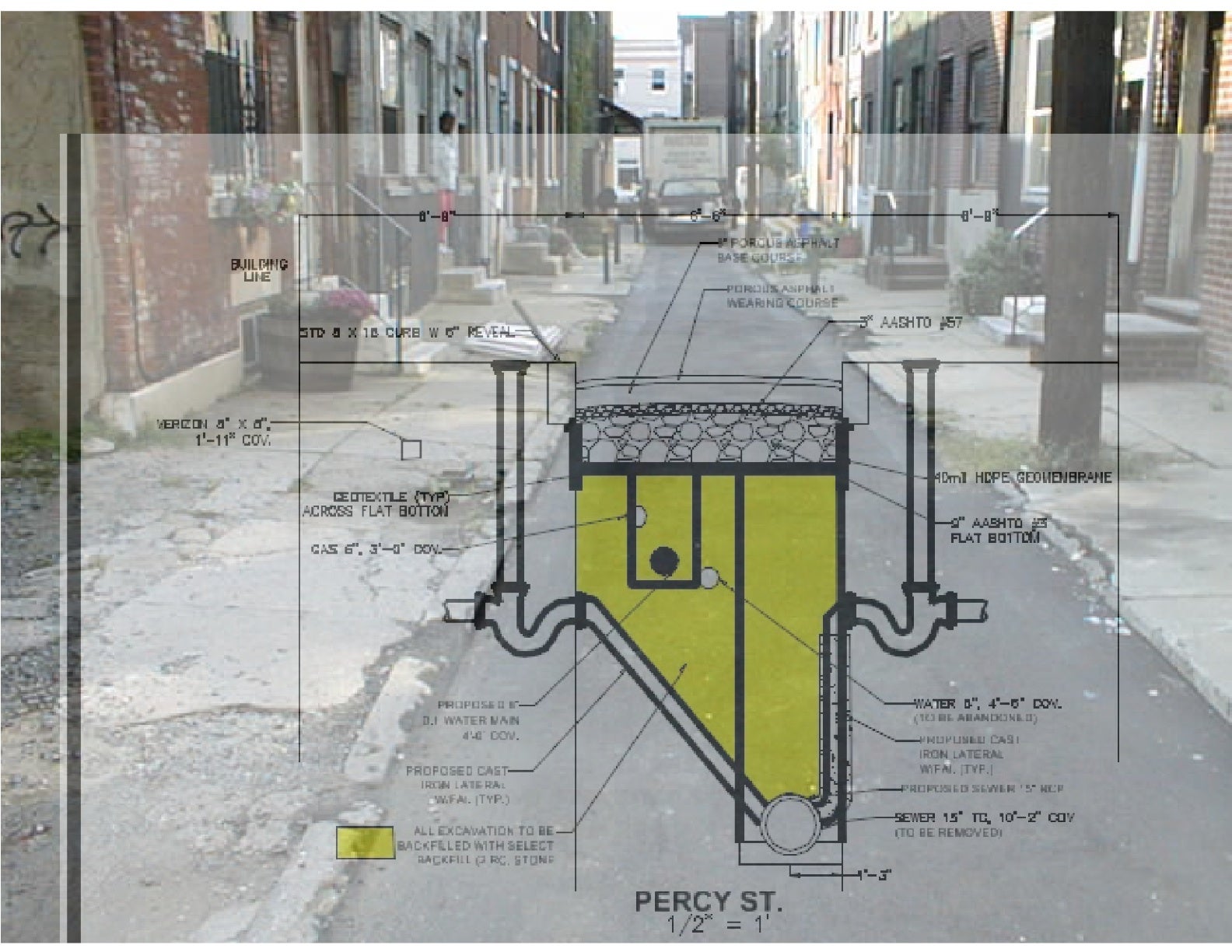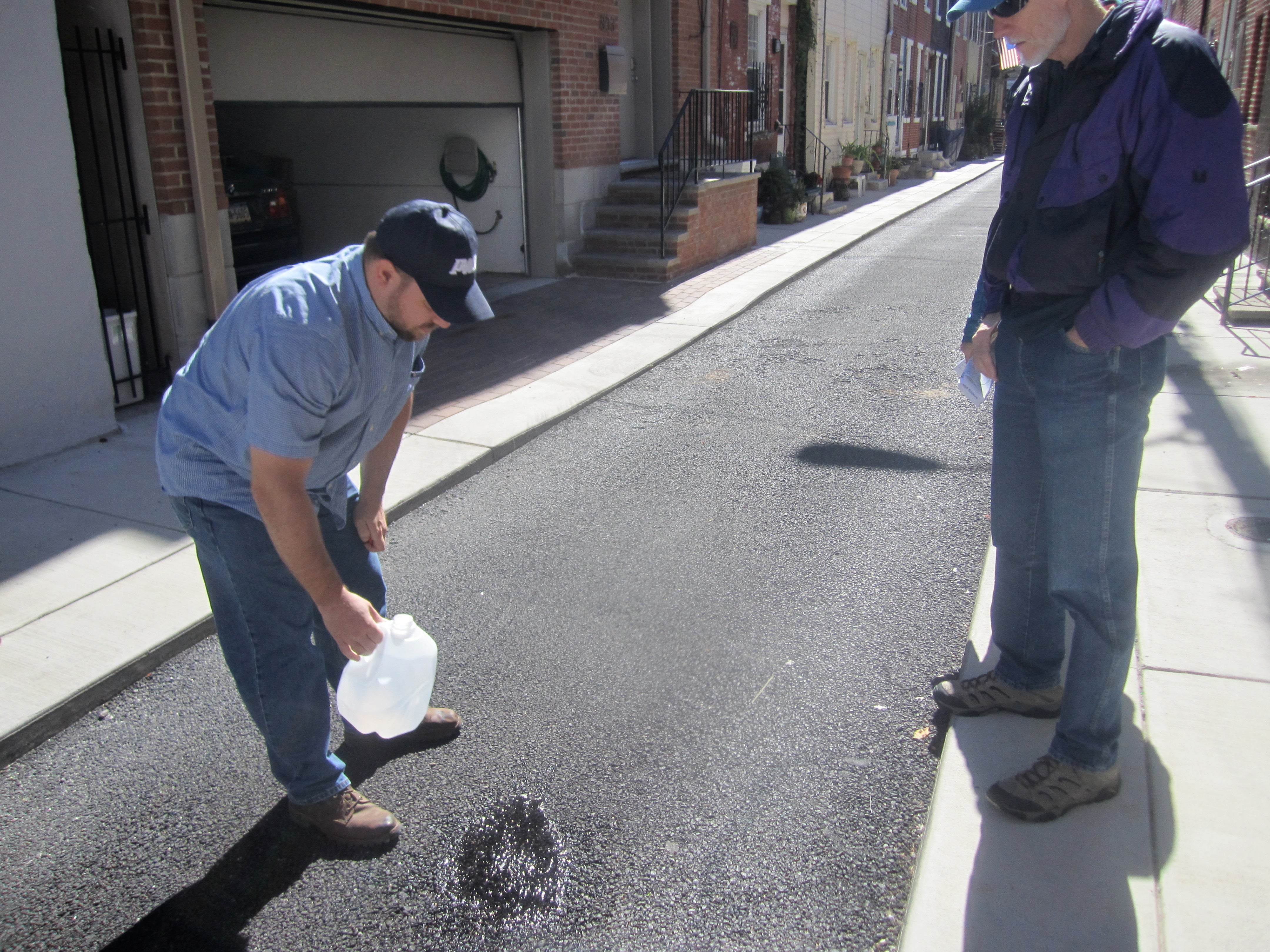Green Streets Design Manual makes street “greening” transparent, accessible
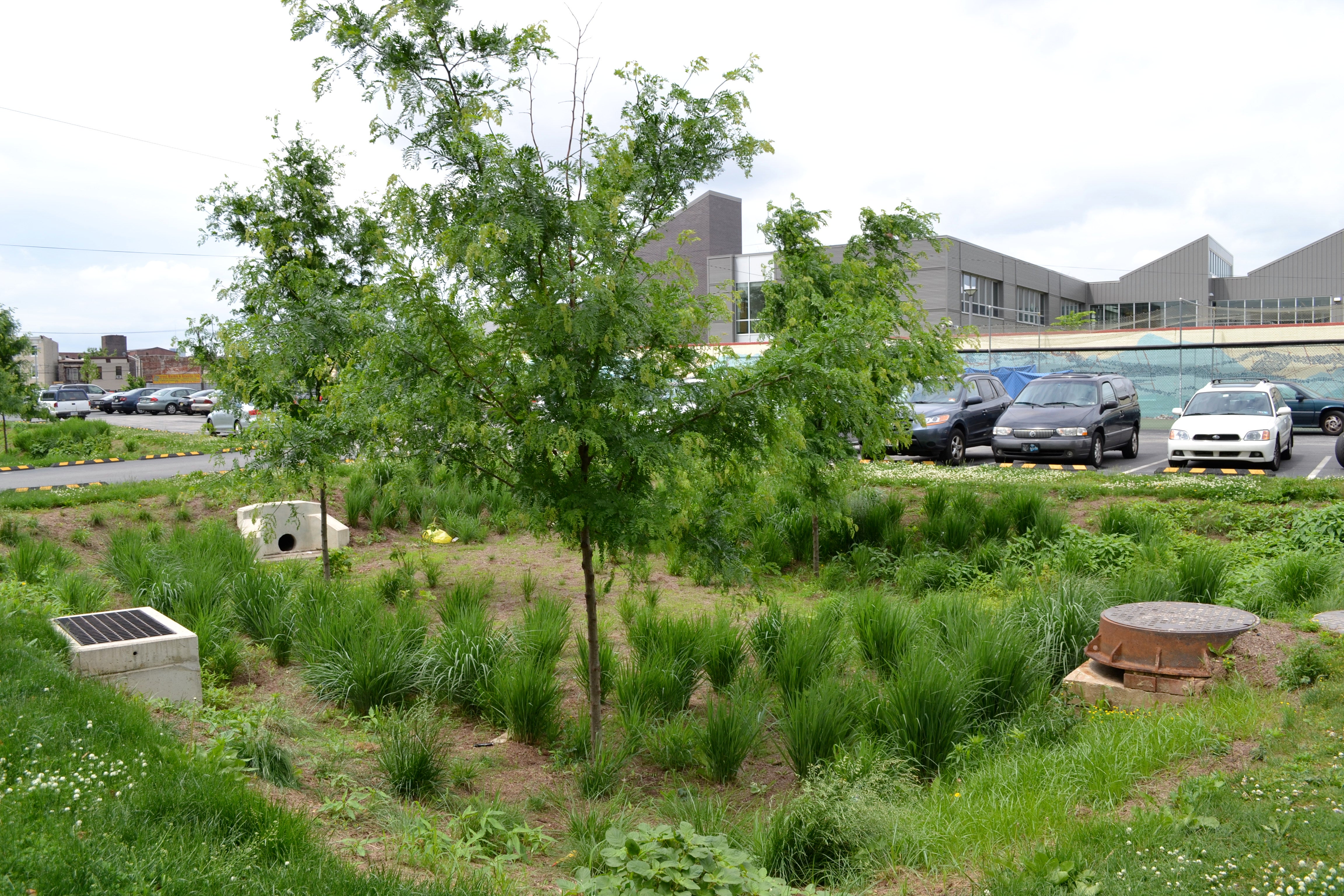
With all of the slush, snow, salt and grime, it may be hard to imagine Philly’s streets as anything other than gray, but the Philadelphia Water Department (PWD) and the Philadelphia Streets Department have taken a major step toward converting the city’s streets from gray to green. This month PWD, with the help of the Streets Department, released Philly’s first ever Green Streets Design Manual.
Similar to the way the Complete Streets Design Handbook provides guidance for developing complete streets, the Green Streets Design Manual provides design standards and procedural guidance for creating green stormwater infrastructure (GSI) on Philly’s streets. The hope is that by sharing this information and creating transparency, more developers, organizations or individuals will opt to install GSI features such as stormwater tree trenches, permeable pavement and green gutters.
The design manual provides flexible design guidance for eight types of GSI: stormwater tree trenches, stormwater trees, three types of stormwater bumpouts, permeable pavement, green gutters and stormwater drainage wells. It includes information on street types as defined in the Philadelphia Pedestrian and Bicycle Plan, recommendations on where various GSI treatments may or may not be appropriate considering the street “components” identified in the Complete Streets Design Manual and an outline of the procedural permitting process.
No one has to use the Green Streets Design Manual, but nearly anyone can use it.
“At this point green streets are not required,” said Jessica Brooks, who leads the GSI Implementation Program at PWD. “We do have stormwater regulation, but it’s not required that you manage runoff within the right of way through green practice at this time.”
That being said, “The Streets Department does have a lot of interaction with developers, so they have the ability to make recommendations to come and talk to the Water Department when they see a development … that’s going to reconstruct a street.”
A few parties have already come to PWD on their own seeking GSI guidance for public right-of-way projects. One such project is the Penn Street Trail, which runs from Spring Garden Street, along Penn Street to Sugar House Casino and was spearheaded by the Delaware River Waterfront Corporation.
“The manual can [serve] a pretty wide audience,” Brooks said. “Its main function could be for people interested in designing and installing green streets in Philadelphia. It really gives a lot of information about how to appropriately select a type of street in Philadelphia… and then go through the process of designing that [infrastructure].”
“Really anybody can use it,” she said. “There’s a lot of valuable information there even if you’re designing for your private drive or inside your parking lot. It says green streets, but there’s a ton of info on how to design GSI that can be extracted from it.”
If a developer or organization does opt to install GSI in the city-owned right of way, there is a PWD and Streets Department review process required. Though, if a project is redesigning a right of way, chances are the project would already be flagged for Streets Department review.
In many ways the manual is a next step that builds on the city’s Complete Streets Design Handbook and an essential building block in fulfilling the city’s Green City, Clean Water commitment to managing stormwater through innovative GSI. PWD is working closely with the Philadelphia School District, Department of Parks & Recreation and Department of Public Property, and PWD has already started working with Parks & Rec on a “green” parks manual – yes, even parks need green manuals.
With the Green Streets Design Manual, PWD wanted to “make sure we had a good template and then be able to really set our focus on schools and parks,” Brooks said.
When asked why PWD used the city’s streets as a model and template for future GSI, Brooks said, “For starters streets are about 38% of the impervious cover in our combine service area so streets are a huge target for us… It’s also a place where the Water Department has been working with the Streets Department in the streets of Philadelphia since we became the Water Department, so there was a certain level of understanding.”
PWD and the Streets Department have already worked together to pilot six of the eight green street GSI treatments, a process they began in 2006. Permeable asphalt and an underground stone infiltration bed line the 800 block of Percy Street in South Philadelphia. Stormwater planters can be found along Columbus Square. There is a stormwater bumpout at 3rd Street and Fairmount Ave, and stormwater trees and stormwater tree trenches surround Shissler Rec Center.
The Green Streets Design Manual provides guidance for each of these types of treatments, but it also details two types of GSI street treatments that the PWD has not yet tried: green gutters and stormwater drainage wells. Green gutters are narrow and shallow landscaped strips along a street’s curb that manage water from the street and sidewalk. Stormwater drainage wells are below ground tanks perforated with holes. Water enters through perforations in the manhole and then seeps into the surrounding soil.
“Those are things that we have not tested in the city yet, but they’re a reflection of our looking at other cities and seeing what they’re doing and making sure people continue to think about the evolution of green streets,” Brooks said. “We’re going to have to continue to update this manual because we’re going to have to continue to test out new ideas.”
A complete map of GSI completed by the Philadelphia Water Department can be found online at http://phillywatersheds.org/biggreenmap
WHYY is your source for fact-based, in-depth journalism and information. As a nonprofit organization, we rely on financial support from readers like you. Please give today.



